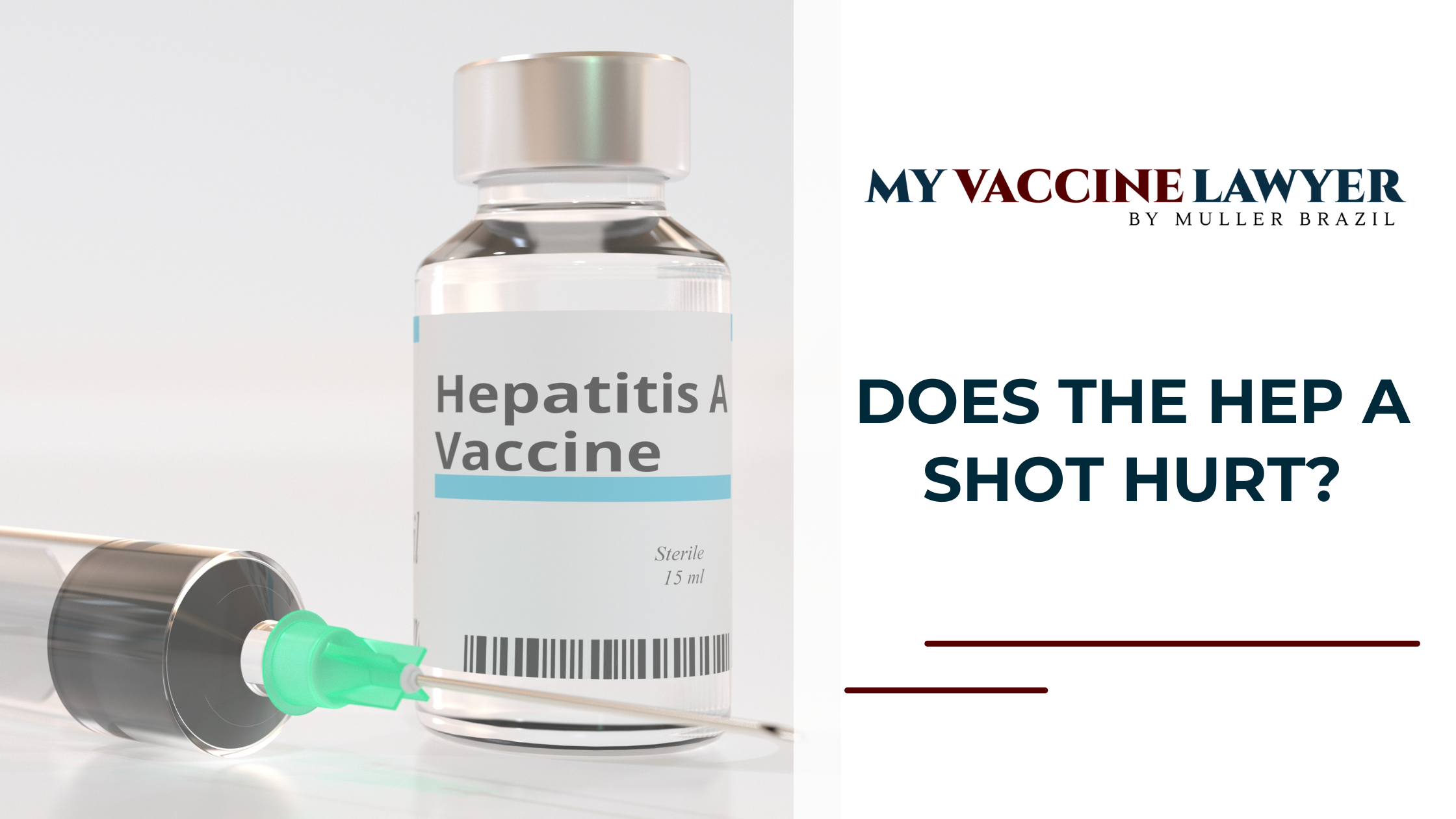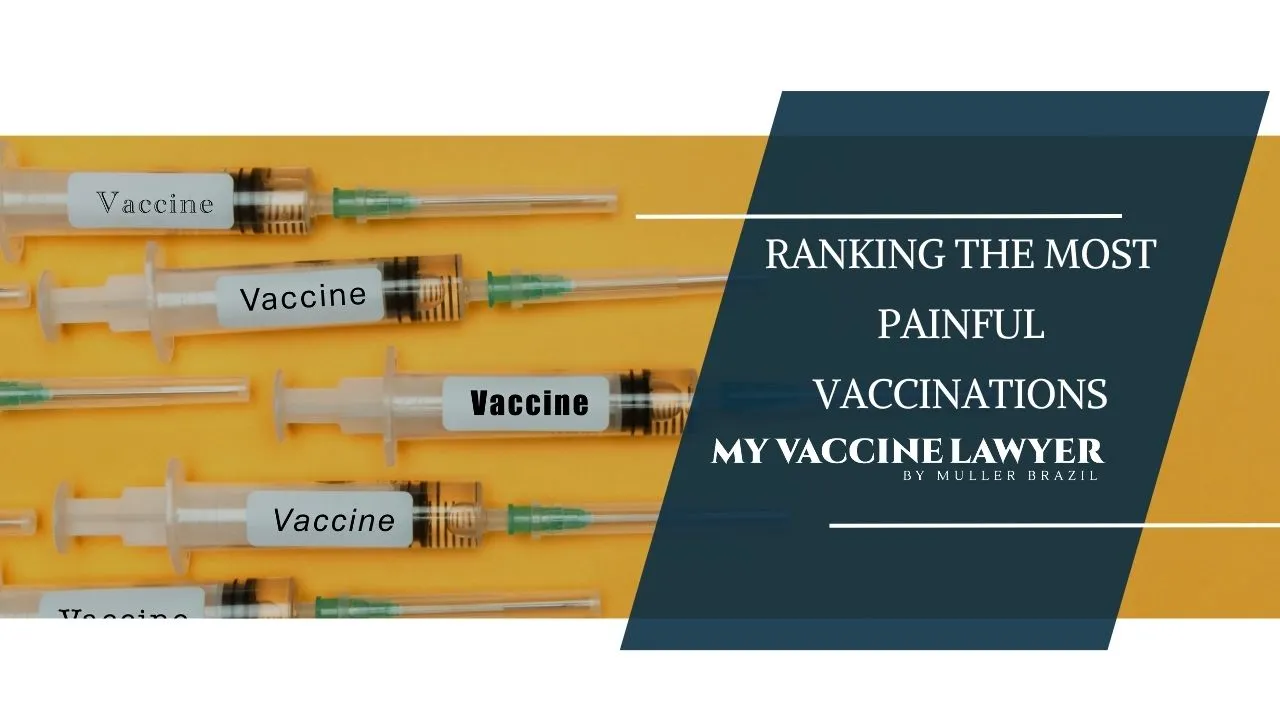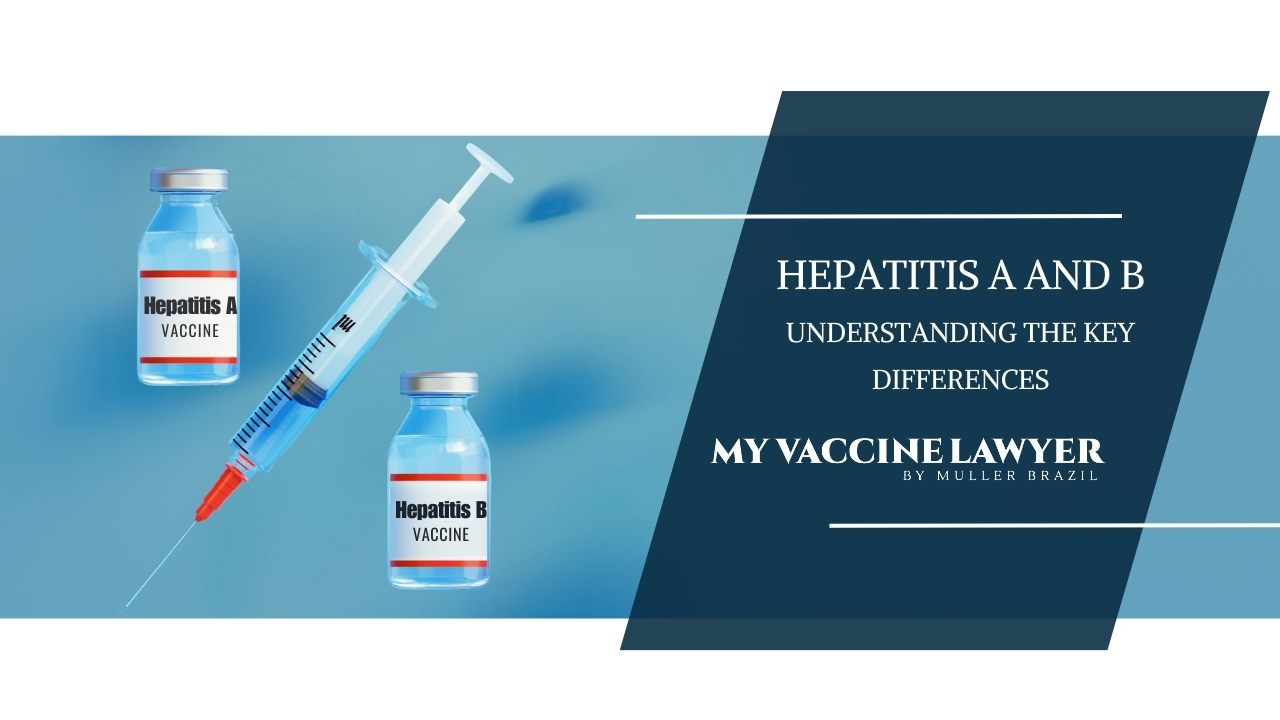Does the Hep A Shot Hurt?
The hepatitis A shot typically causes mild pain, like a quick pinch and brief arm soreness, but severe reactions are rare. In rare cases, some people...
8 min read
Vaccine Injury Law Resources / Types of Vaccine / Hepatitis A vs. B: Key Differences You Should Know
 Max Muller
:
Mar 17, 2024 3:54:45 AM
Max Muller
:
Mar 17, 2024 3:54:45 AM
When it comes to diseases like Hepatitis A and B, understanding “what is the difference between hepatitis a and b” is not just an academic exercise – it can have real-world implications for prevention and treatment.
Despite their similar names, Hepatitis A and B are distinct in their transmission routes, symptoms, potential complications, and, importantly, their vaccines.
This post will explore the key differences between the two, their unique transmission routes, symptoms, and potential complications. We will also dive into their respective vaccines and prevention strategies. We’ll also look at how Hepatitis A and B are diagnosed and treated and discuss the risk factors and vulnerable populations for each.
Hepatitis, often feared and misunderstood, is a collection of diseases causing liver inflammation. Three common types of viral hepatitis are Hepatitis A, Hepatitis B, and Hepatitis C, caused by Hepatitis A virus (HAV), Hepatitis B virus (HBV), and Hepatitis C virus (HCV), respectively. Both Hepatitis A and Hepatitis B cause liver disease but differ substantially in their transmission methods, symptoms, and possible complications.
Hepatitis A spreads mainly through consuming food or water contaminated by feces from an infected person. On the other hand, Hepatitis B is spread through exposure to body fluids of an infected person, such as blood, semen, or vaginal secretions.
Thus, while Hepatitis A is often associated with poor sanitation and hygiene practices, Hepatitis B is commonly transmitted through sexual contact, sharing of needles, or from an infected mother to her baby during birth.
When it comes to symptoms, different types of hepatitis can have different effects on the body:
As for potential complications:
Understanding these differences is crucial in preventing and treating these diseases.
How a disease is transmitted plays a key role in shaping its spread and control. As noted, Hepatitis A is most commonly contracted through the fecal-oral route. This means that the virus, present in the feces of infected individuals, can be ingested by others if hygiene practices aren’t strictly followed.
It can also be contracted through close personal contact with an infected person, such as through certain types of sexual contact or consumption of contaminated food or water.
On the other hand, Hepatitis B is primarily spread through contact with infected blood or other body fluids. This can occur through sexual contact, sharing needles, or from an infected mother to her baby at birth. Any exposure to blood, even a microscopic amount, carries the potential risk of transmitting Hepatitis B, which can lead to chronic liver disease if left untreated.
Recognizing the symptoms of a disease is the first step toward seeking timely medical assistance. When it comes to Hepatitis A, some individuals may not show any signs or symptoms, particularly children. However, when symptoms do occur, they can persist for a period ranging from less than 2 months to more than 6 months. These may include:
Unlike hepatitis A or C, the symptoms of Hepatitis B can be more subtle. Some people infected with the Hepatitis B virus may not feel sick or show any symptoms, particularly in the early stages of the disease. However, others may experience symptoms such as:
If left untreated, Hepatitis B can lead to chronic liver disease, cirrhosis, and even liver cancer. Therefore, recognizing varying symptoms and their severity can help promptly diagnose and treat.
A disease's long-term effects and potential complications are important considerations in managing it. Hepatitis A, while uncomfortable and distressing, rarely results in lasting liver damage. Most people who contract Hepatitis A experience uncomfortable symptoms for several weeks. Thankfully, they usually make a full recovery and don’t have any permanent liver damage.
In contrast, the stakes are much higher with Hepatitis B. Individuals with chronic Hepatitis B often do not show symptoms and may develop serious liver conditions, such as cirrhosis, liver cancer, and liver failure.
In fact, cirrhosis and liver cancer are common in individuals with Hepatitis B, with studies showing that cirrhosis occurs in between 88% to 93% of cases. Furthermore, Hepatitis B-related liver disease causes approximately 3,000 deaths annually in the United States alone.
Thus, knowledge about the potential long-term effects of chronic disease can encourage individuals to undertake necessary preventive measures.
Prevention is always better than cure, which holds for Hepatitis A and B. The most effective strategy to prevent these diseases is through vaccination. Vaccines stimulate our immune system to produce a response, including antibodies, which help protect us against future infections.
In addition to vaccines, other preventive strategies are important in controlling the spread of these diseases. These include practicing good hand hygiene, safe sex, and avoiding sharing needles or personal items that could carry the virus.
We will explore these preventive strategies, focusing on vaccines for Hepatitis A and B and other supplementary measures to prevent these diseases.
The Hepatitis A vaccine is a safe and reliable method to protect the body from becoming infected by the Hepatitis A virus. It is also highly successful in providing immunity to the virus. The vaccine is administered as two shots, six months apart.
Both doses of the Hepatitis A vaccine are essential for long-term immunity. Vaccination is the only way to guarantee sustained protection from this virus.
The Hepatitis A vaccine is recommended for specific high-risk groups. These include:
Even if there is a delay in administering the final dose of the vaccine, the second dose should be given as soon as possible.
Take Control of Your Injury Today
The Hepatitis B vaccine has proven to be a game-changer in preventing Hepatitis B. It has demonstrated safety and effectiveness in preventing Hepatitis B and offers long-term protection against the infection for over 20 years. The Hepatitis B vaccine is recommended for all infants to prevent developing severe liver disease.
The Hepatitis B vaccine is administered through a series of three shots:
By stimulating the body’s production of antibodies against the Hepatitis B virus, the vaccine provides a protective shield against this potentially grave disease.
The hepatitis A and hepatitis B vaccines can be given separately or as a combination vaccine.
Besides vaccination, additional preventive measures can be taken to reduce the risk of contracting Hepatitis A and B. Good hand hygiene, for instance, is crucial in preventing the transmission of Hepatitis A. Regular handwashing with soap and warm water, especially after using the restroom or before preparing food, can help keep the virus at bay.
For Hepatitis B, practicing safe sex and avoiding sharing needles are important preventive measures. Here are some ways to prevent Hepatitis B:
Prompt diagnosis and treatment of Hepatitis A and B can prevent severe health complications, including acute infection. Diagnosing these conditions involves discussing symptoms with a healthcare provider and administering a blood test to detect antibodies or antigens associated with the viruses.
Once a diagnosis is made, treatment can begin. For Hepatitis A, the treatment primarily includes:
In severe instances, hospitalization may be necessary for more comprehensive care. Along with these, patients diagnosed with Hepatitis A should:
Diagnostic tests for Hepatitis A and B include blood tests to detect the presence of specific antibodies or antigens. In tests for Hepatitis A, the specific antibodies detected are IgM and IgG antibodies. In the case of Hepatitis B tests, antibodies such as anti-HBs, anti-HBc, and anti-HBe are identified alongside antigens like HBsAg, HBeAg, and HBcAg.
The diagnosis procedure for Hepatitis A and B involves collecting a blood sample and sending it to a laboratory. Here, tests are conducted to detect antibodies or antigens associated with the hepatitis viruses, helping to assess the infection status and severity.
When it comes to treatment, Hepatitis A and B also follow different paths. The treatment for Hepatitis A primarily consists of supportive care, as no specific treatment is currently available. This care involves:
The recovery period may extend from several weeks to months.
In contrast, the management of Hepatitis B may include the use of antiviral medications such as entecavir, tenofovir disoproxil fumarate (TDF), tenofovir alafenamide (TAF), and pegylated interferon alfa (PEG-IFN-a).
These medications can help control the infection and slow cirrhosis's progression. Regular blood tests, liver enzyme checks, ultrasounds, and liver biopsies are also used to monitor liver health in patients diagnosed with Hepatitis B.
.jpg?width=411&height=231&name=Recognizing%20Symptoms%20Early%20The%20Clinical%20Presentation%20of%20CRPS%20(1).jpg)
Identifying risk factors and pinpointing vulnerable populations can help in directing prevention and treatment efforts for Hepatitis A and B. Common risk factors for acquiring hepatitis A B include:
Certain populations are more susceptible to Hepatitis A and B due to factors such as:
Recognizing these risk factors and implementing preventive measures help protect these vulnerable populations.
Certain risk factors are common for both Hepatitis A and B. For instance, certain occupations, such as healthcare and public safety workers, are at an increased risk of contracting Hepatitis A and B due to their exposure to infected blood or body fluids.
Traveling to certain areas can also increase the risk of contracting these diseases due to:
Moreover, contact with infected blood or body fluids, poor hygiene practices, travel to areas with high infection rates, and close contact with an infected person are shared risk factors commonly associated with Hepatitis A and B. Understanding these risk factors can help us take the right preventive steps.
Take Control of Your Injury Today
In addition to common risk factors, there are also unique risk factors for Hepatitis A and B. For instance, the consumption of contaminated food or water significantly increases the risk of contracting Hepatitis A. On the other hand, having multiple sexual partners increases the risk of contracting Hepatitis B due to the heightened likelihood of sexual transmission of the virus.
Moreover, infants born to mothers with Hepatitis B are at a significant risk of acquiring the virus. In the absence of proper medical intervention, there is a greater than 90% likelihood that the infant will develop chronic Hepatitis B. By understanding these specific risk factors, we can create more personalized prevention plans.
In summary, while Hepatitis A and B share some similarities, they are distinct. These differences in transmission routes, symptoms, potential complications, and vaccines are key for effectively preventing and treating these diseases. By understanding these key differences, we can take informed steps to protect ourselves and our communities from these diseases.
In conclusion, Hepatitis A and B pose serious health threats worldwide, but they are preventable. Vaccination remains the most effective preventive strategy, alongside practicing good hygiene, safe sex, and avoiding sharing needles. By being informed about the risk factors and vulnerable populations, we can better target our preventive efforts and reduce the burden of these diseases.
Hepatitis B is more serious than hepatitis A as it can cause chronic liver damage, whereas severe hepatitis A rarely leads to liver failure.
Hepatitis A can usually resolve itself within a few months. Hepatitis B can be suppressed with antiviral drugs until it leaves the body. Hepatitis C can be cured outright with medication. Therefore, it is possible to get rid of both hepatitis A and B.
Hepatitis B is an STI and BBV which can be transmitted through sexual contact. Hepatitis A and C are not considered STIs but can be spread during some types of sexual contact. Therefore, only Hepatitis B is an STD.
Hepatitis A can cause fever, fatigue, loss of appetite, nausea, abdominal pain, dark urine, and jaundice, while Hepatitis B may be asymptomatic or manifest in symptoms like fatigue, loss of appetite, fever, and yellow skin or eyes
Mr. Muller currently devotes the majority of his law practice to aggressively fighting for the victims of unsafe drug and medical device injuries, as well as vaccine injuries and vaccine reactions involving the flu shot, TDaP/DTaP vaccine, and more. He has handled hundreds of SIRVA injury cases (shoulder injury related to vaccine administration), especially those involving bursitis, tendonitis, frozen shoulder, and rotator cuff tears. Mr. Muller also handles cases where vaccines caused serious nerve injuries such as Guillain-Barre Syndrome. Mr. Muller has recovered millions of dollars in compensation for his clients in the Vaccine Injury Compensation Program.

The hepatitis A shot typically causes mild pain, like a quick pinch and brief arm soreness, but severe reactions are rare. In rare cases, some people...

Some vaccines hurt more than others due to factors like the injection method, vaccine ingredients, and individual sensitivity relating to genetics...

Understanding the factors influencing life expectancy for those with this Neuromyelitis Optica (NMO) is essential in providing the best possible care...
